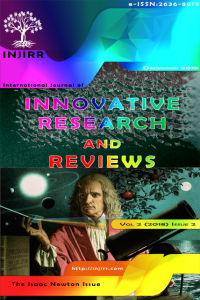An Experimental Approach of Smart Engine Coolant Thermal Management Strategy During Engine Warmup Period
An Experimental Approach of Smart Engine Coolant Thermal Management Strategy During Engine Warmup Period
Instantaneous energy balance, Coolant flow rate, Warmup, Thermal energy management, Engine cooling system Electric pump, SI engine,
___
- [1] Kuboyama T, Moriyoshi Y, Iwasaki M, Hara J. Effect of coolant water and intake air temperatures on thermal efficiency of a spark ignition engine. In: The SICE Annual Conference 2013: IEEE. p. 385–388.
- [2] Caresana F, Bilancia M, Bartolini CM. Numerical method for assessing the potential of smart engine thermal management: Application to a medium-upper segment passenger car. Applied Thermal Engineering (2011) 31(16):3559–3568.
- [3] Hölz P, Böhlke T, Krämer T. Determining water mass flow control strategies for a turbocharged SI engine using a two-stage calculation method. Applied Thermal Engineering (2019) 146:386–395.
- [4] Praveen SM, Saravanan B, Siddharthan B, Kumaragurubaran SB. Thermal management in conventional diesel engines. Materials Today: Proceedings (2021) 45:1161–1165.
- [5] Ghasemi Zavaragh H, Kaleli A, Solmuş İ, Afshari F. Experimental Analysis and Evaluation of Thermostat Effects on Engine Cooling System. Journal of Thermal Science (2020).
- [6] Haghighat AK, Roumi S, Madani N, Bahmanpour D, Olsen MG. An intelligent cooling system and control model for improved engine thermal management. Applied Thermal Engineering (2018) 128:253–263.
- [7] Kang H, Ahn H, Min K. Smart cooling system of the double loop coolant structure with engine thermal management modeling. Applied Thermal Engineering (2015) 79:124–131.
- [8] Castiglione T, Falbo L, Perrone D, Bova S. Cooling on-demand for knock prevention in spark-ignition engines: An experimental analysis. Applied Thermal Engineering (2021) 195:117161.
- [9] Ribeiro EG, Andrade Filho AP de, Carvalho Meira JL de. Electric water pump for engine cooling. Report (2007).
- [10] Bova S, Castiglione T, Piccione R, Pizzonia F. A dynamic nucleate-boiling model for CO2 reduction in internal combustion engines. Applied Energy (2015) 143:271–282.
- [11] Lindgärde O, Feng L, Tenstam A, Soderman M. Optimal Vehicle Control for Fuel Efficiency. SAE International Journal of Commercial Vehicles (2015) 8(2):682–694.
- [12] Banjac T, Wurzenberger JC, Katrašnik T. Assessment of engine thermal management through advanced system engineering modeling. Advances in Engineering Software (2014) 71:19–33.
- [13] Shin YH, Kim SC, Kim MS. Use of electromagnetic clutch water pumps in vehicle engine cooling systems to reduce fuel consumption. Energy (2013) 57:624–631.
- [14] Zhang B, Zhang P, Zeng F. Experimental study on the heat balance of turbocharged marine diesel engines with variable coolant flow. Ships and Offshore Structures (2021):1–19. doi:10.1080/17445302.2021.2010443.
- [15] Hasegawa N, Moriyoshi Y, Kuboyama T, Iwasaki M. Effect of Coolant Water and Intake Air Temperatures on Thermal Efficiency of Gasoline Engines. Report (2017).
- [16] Naderi A, Qasemian A, Shojaeefard MH, Samiezadeh S, Younesi M, Sohani A, et al. A smart load-speed sensitive cooling map to have a high-performance thermal management system in an internal combustion engine. Energy (2021) 229:120667.
- [17] Özcan H. Energy and exergy analyses of Al2O3-diesel-biodiesel blends in a diesel engine. International Journal of Exergy (2019) 28(1):29–45.
- [18] Sarıkoç S, Örs İ, Ünalan S. An experimental study on energy-exergy analysis and sustainability index in a diesel engine with direct injection diesel-biodiesel-butanol fuel blends. Fuel (2020) 268:117321.
- [19] Aghbashlo M, Tabatabaei M, Mohammadi P, Pourvosoughi N, Nikbakht AM, Goli SAH. Improving exergetic and sustainability parameters of a DI diesel engine using polymer waste dissolved in biodiesel as a novel diesel additive. Energy Conversion and Management (2015) 105:328–337.
- [20] Kaltakkıran G, Ceviz MA. The performance improvement of direct injection engines in cold start conditions integrating with phase change material: Energy and exergy analysis. Journal of Energy Storage (2021) 42:102895.
- [21] Da Costa YJR, Lima AGB de, Bezerra Filho CR, Araujo Lima L de. Energetic and exergetic analyses of a dual-fuel diesel engine. Renewable and Sustainable Energy Reviews (2012) 16(7):4651–4660.
- [22] Gao J, Chen H, Tian G, Ma C, Zhu F. An analysis of energy flow in a turbocharged diesel engine of a heavy truck and potentials of improving fuel economy and reducing exhaust emissions. Energy Conversion and Management (2019) 184:456–465.
- [23] Romero CA, Torregrosa A, Olmeda P, Martin J. Energy balance during the warm-up of a diesel engine. Report (2014).
- Başlangıç: 2017
- Yayıncı: Muhammet Kaan YEŞİLYURT
Galip KALTAKKIRAN, Kadir BAKIRCI
Use of Unmanned Aerial Vehicles in Runway Control
Freeze-Thaw Effect in Granular Soil Reinforced with Calcareous Portland Cement
Nazan DEMIR, Sıla Nezahat DASDEMIR
A Review of the Generation of Electrical Energy with Renewable Energy Sourced Piezoelectric Material
Yelda KARATEPE MUMCU, Nazlı Duriye DAĞLAR, Feyza MALKOÇ
Pharmacological activities of Borassus flabellifer L. extracts and isolated compounds
Vinujan SHANMUGALİNGAM, Saravanan VİVEKANANDARAJAH SATHASİVAMPİLLAİ, Srithayalan SRİVİJEİNDRAN
Esra TURGUT, Hayrunnisa NADAROGLU, Azize ALAYLI
A Comparison Between Fixed Solar Panel and Dual-Axis Solar Tracking System in Menderes District
Doğukan POSTOĞLU, İlhan Volkan ÖNER1
Muhammed Cüneyt BAĞDATLI, Esra CAN1
Burcu ATEŞ ÖZCAN, * Burcu YEŞİLKAYA, Hande ÖNGÜN YILMAZ, Ahmet Murat GÜNAL, Asena Ayça ÖZDEMİR
